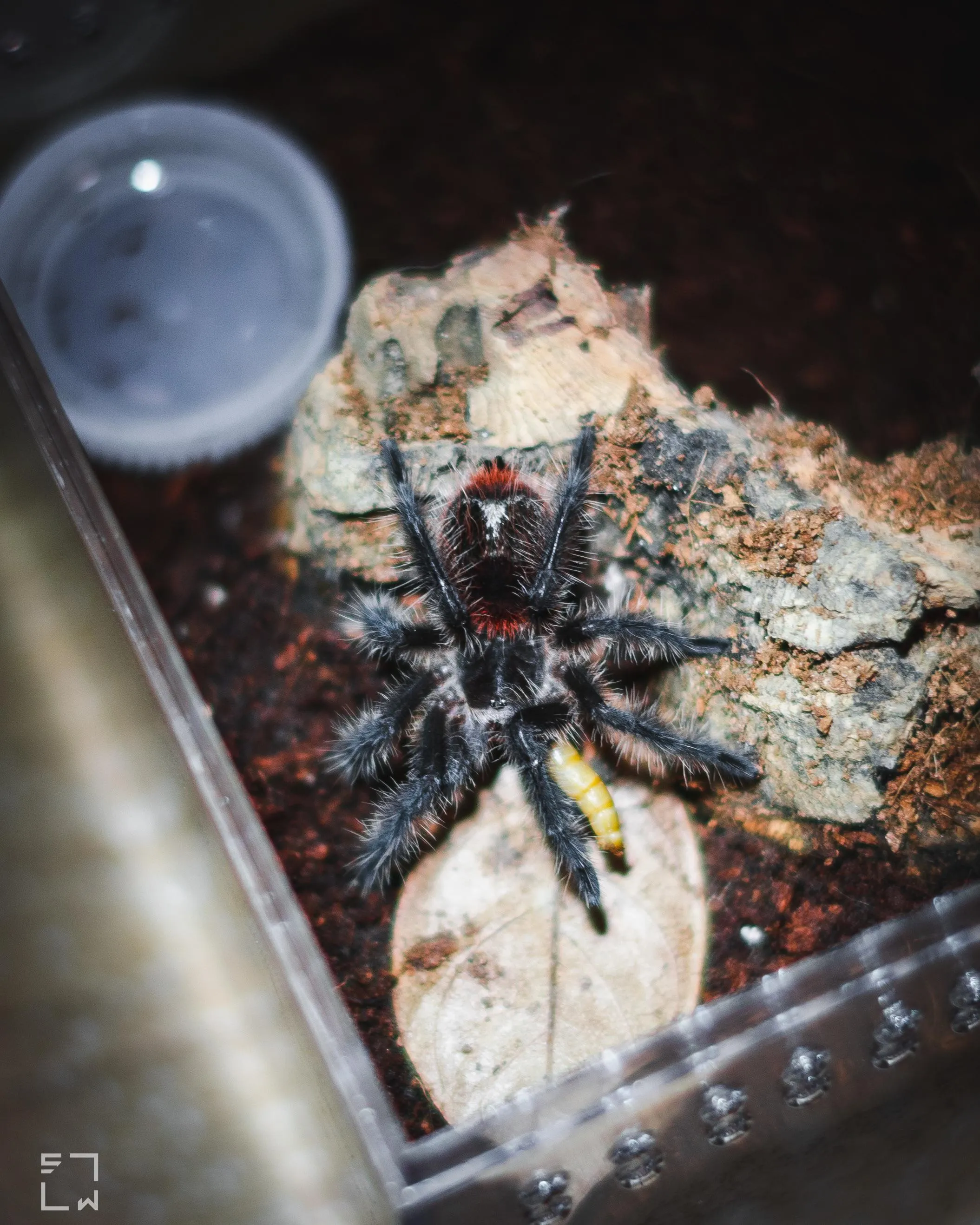What Do Tarantulas Eat
Understanding the dietary needs of your tarantula is crucial for its health and longevity. In the wild, these fascinating creatures are opportunistic predators, feeding on a variety of insects, small invertebrates, and occasionally, even small vertebrates. When it comes to captive care, replicating their natural diet as closely as possible is the key to providing them with optimal nutrition. This means understanding what types of food are safe, nutritious, and appealing to your tarantula. A well-balanced diet not only ensures their physical well-being but also contributes to their overall vitality and promotes natural behaviors. The success of tarantula feeding lies in the details of what they eat.
Insects as Primary Diet
Insects form the cornerstone of a tarantula’s diet in captivity, mirroring their natural feeding habits. They provide essential nutrients, including protein, fats, and vitamins, that are vital for growth, molting, and overall health. The type of insects you choose to feed your tarantula will directly influence its nutritional intake. Selecting a variety of insects can help ensure a well-rounded diet, minimizing the risk of nutritional deficiencies. However, it is important to avoid feeding your tarantula insects that have been exposed to pesticides or other harmful chemicals. Always source your insects from reputable suppliers who prioritize the health and safety of their feeder insects. Remember that a diverse and safe insect diet is paramount for a thriving tarantula.
Crickets
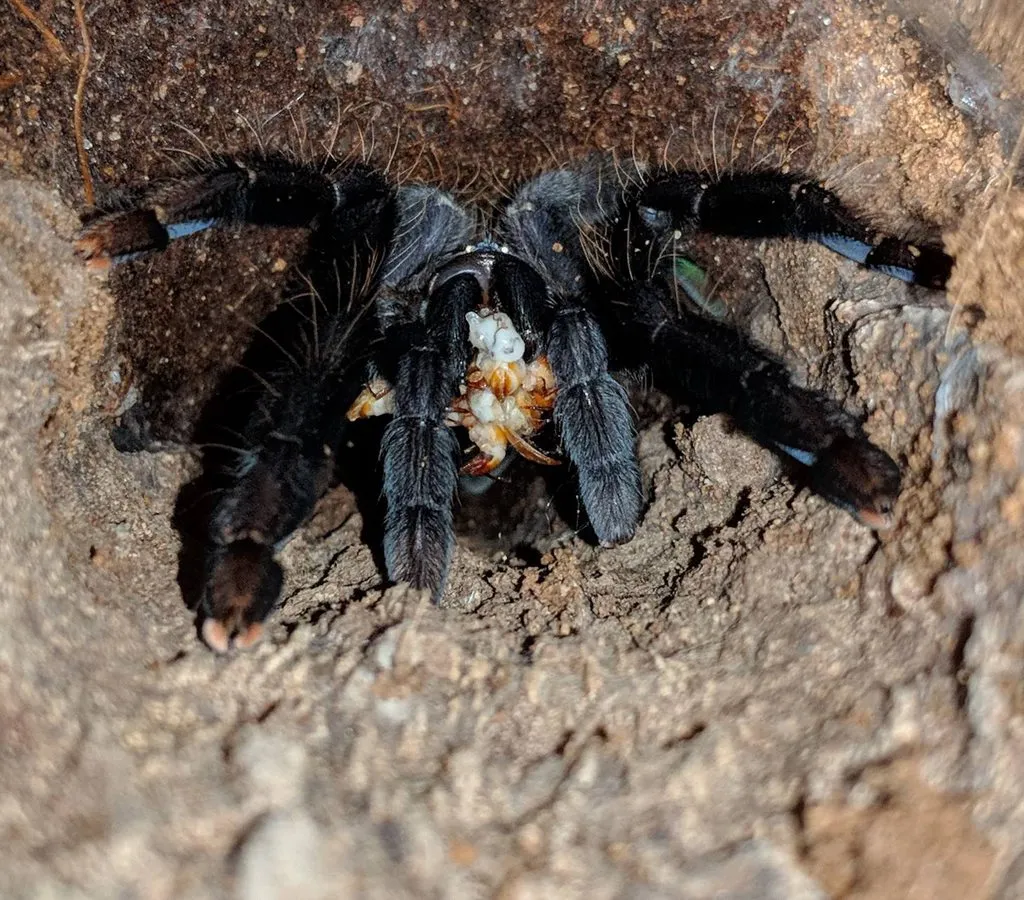
Crickets are a staple food for many tarantulas, readily available and generally easy to manage. They are a good source of protein, and most tarantulas readily accept them. When feeding crickets, choose appropriately sized ones to prevent your tarantula from feeling intimidated or the crickets from injuring the spider during a molt. Before feeding, it’s important to gut-load the crickets. This process involves feeding the crickets a nutritious diet, which, in turn, provides your tarantula with enhanced nutritional value. Keep in mind that crickets can sometimes be noisy and may need to be removed if not eaten quickly by your tarantula. Monitor your tarantula’s feeding habits and adjust cricket offerings accordingly.
Mealworms
Mealworms offer another convenient option for tarantula feeding. They are the larvae of the mealworm beetle and are relatively easy to store and maintain. While mealworms are a good source of protein, they also have a higher chitin content than crickets, which may be more difficult for tarantulas to digest in large quantities. Use mealworms as a supplement or in moderation. Again, size is an important factor; select mealworms that are appropriately sized for your tarantula. It’s also beneficial to gut-load the mealworms prior to feeding to maximize their nutritional value. Be mindful that mealworms are known to burrow, so ensure that any uneaten mealworms are removed from the enclosure to prevent them from bothering your tarantula.
Roaches
Roaches, especially species like Dubia roaches and hissing roaches, are highly nutritious and a popular choice for tarantula feeders. They offer a good protein-to-fat ratio and are generally easy to digest. Roaches are also less noisy and less prone to escaping compared to crickets. Similar to crickets and mealworms, you should gut-load the roaches to enhance their nutritional value. Consider the size of the roaches in relation to your tarantula, choosing appropriate sizes to avoid any issues. Since roaches can breed, it’s important to manage their populations carefully to prevent them from becoming overwhelming. They are also a great choice for more experienced keepers looking to provide a balanced and stimulating diet.
Other Insects
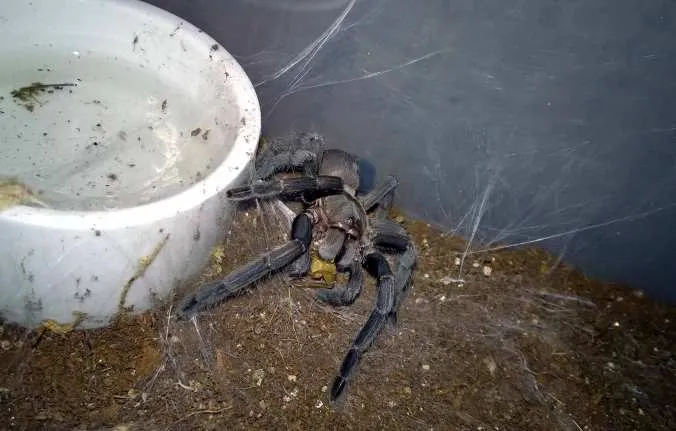
Beyond the staples of crickets, mealworms, and roaches, other insects can supplement your tarantula’s diet. Waxworms, while high in fat, can be a good occasional treat, but should not be a staple due to their high-fat content. Superworms are another option, but their hard exoskeletons can be difficult for some tarantulas to digest. Other insects such as locusts and hornworms can also be offered, providing variety and additional nutrients. The key is to provide a balanced diet and to monitor your tarantula’s reactions to different food items. It’s always wise to research any new feeder insects to ensure they are safe, nutritious, and free from pesticides.
Feeding Frequency for Tarantulas
The frequency of feeding your tarantula varies based on its life stage. Spiderlings, the young and rapidly growing tarantulas, require more frequent feeding to support their growth. Juveniles require less frequent feeding and adults even less. It’s crucial to adjust the feeding schedule as your tarantula matures. Observation is key: monitor your tarantula’s behavior, appetite, and overall condition to determine the appropriate feeding schedule. A healthy tarantula will have a plump abdomen, while a tarantula that refuses food or has a shrunken abdomen may indicate a problem. Always provide fresh water, regardless of the feeding schedule.
Spiderlings Feeding
Spiderlings have the highest metabolic rates and require the most frequent feeding. Feed them small, appropriately sized insects, such as pinhead crickets or flightless fruit flies, every one to two days. Ensure that the food items are smaller than the tarantula’s body size to prevent the spiderling from being overwhelmed. Monitor their feeding habits and adjust the frequency if they are not eating regularly. It’s also crucial to provide a shallow water dish or moist substrate for hydration.
Juveniles Feeding
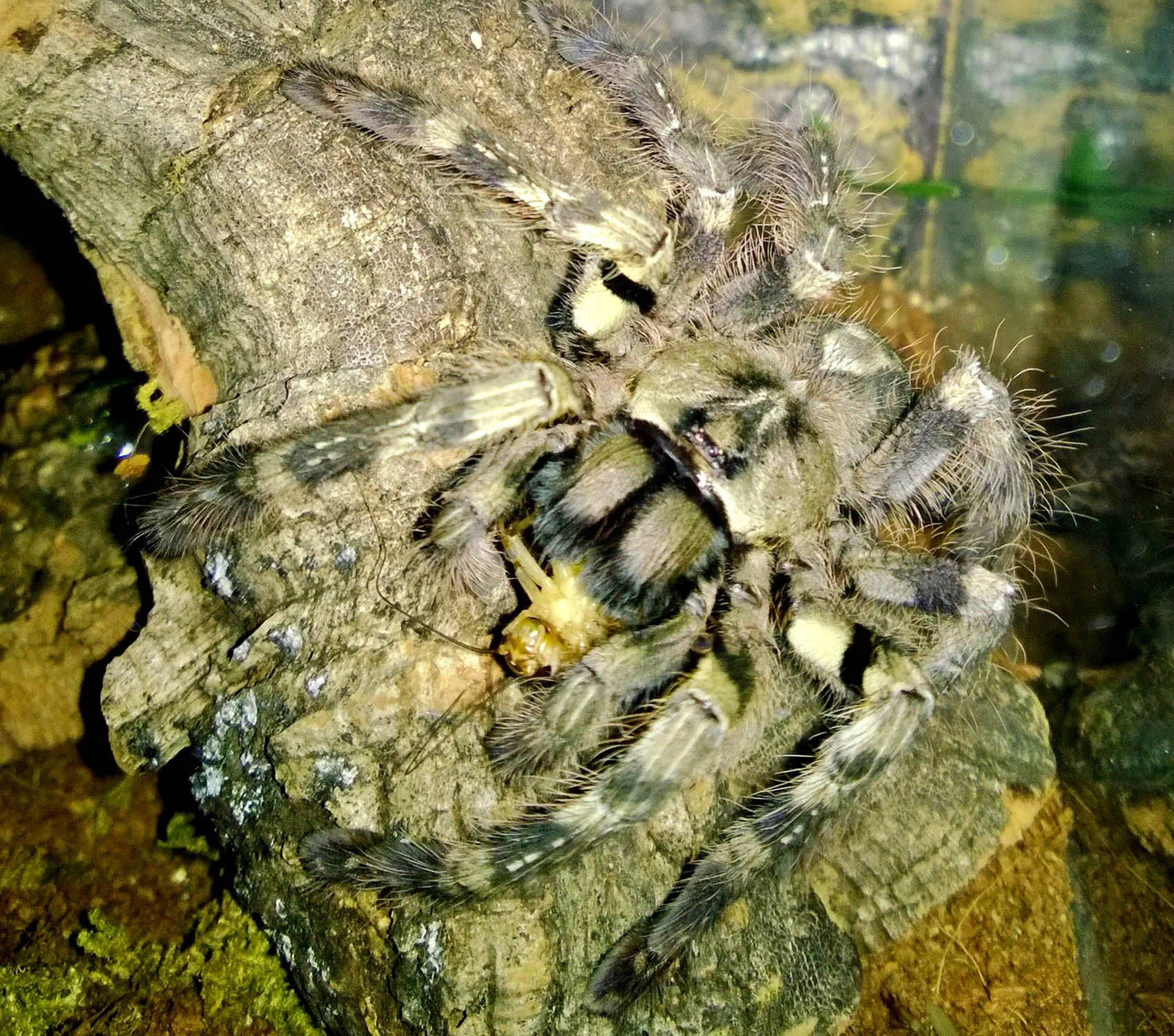
Juvenile tarantulas can be fed less frequently than spiderlings. A feeding schedule of once or twice a week is generally sufficient. Offer them appropriately sized insects, such as small crickets or mealworms. As with spiderlings, observe their appetite and adjust the feeding schedule if necessary. Ensure that the uneaten food items are removed to prevent stressing the tarantula.
Adult Tarantulas Feeding
Adult tarantulas have slower metabolisms and can go longer periods without food. Feed them once every one to two weeks. Offer them larger insects, such as adult crickets or roaches. It’s not unusual for adult tarantulas to refuse food for extended periods, especially before a molt. Always provide fresh water and monitor your adult tarantula’s overall condition. A healthy adult tarantula will typically have a plump abdomen and will readily feed when hungry.
Preparing Food for Your Tarantula
Proper preparation of the food you offer your tarantula significantly impacts its health and safety. This involves not only choosing the right insects but also ensuring that they are healthy and safe for consumption. Gut-loading the insects, removing uneaten food, and providing fresh water are all critical components of food preparation. Failing to take these steps can lead to various problems, including nutritional deficiencies, stress, and the spread of parasites. Proper preparation also includes choosing the right size of food items and considering the tarantula’s preferences.
Gut-Loading Insects
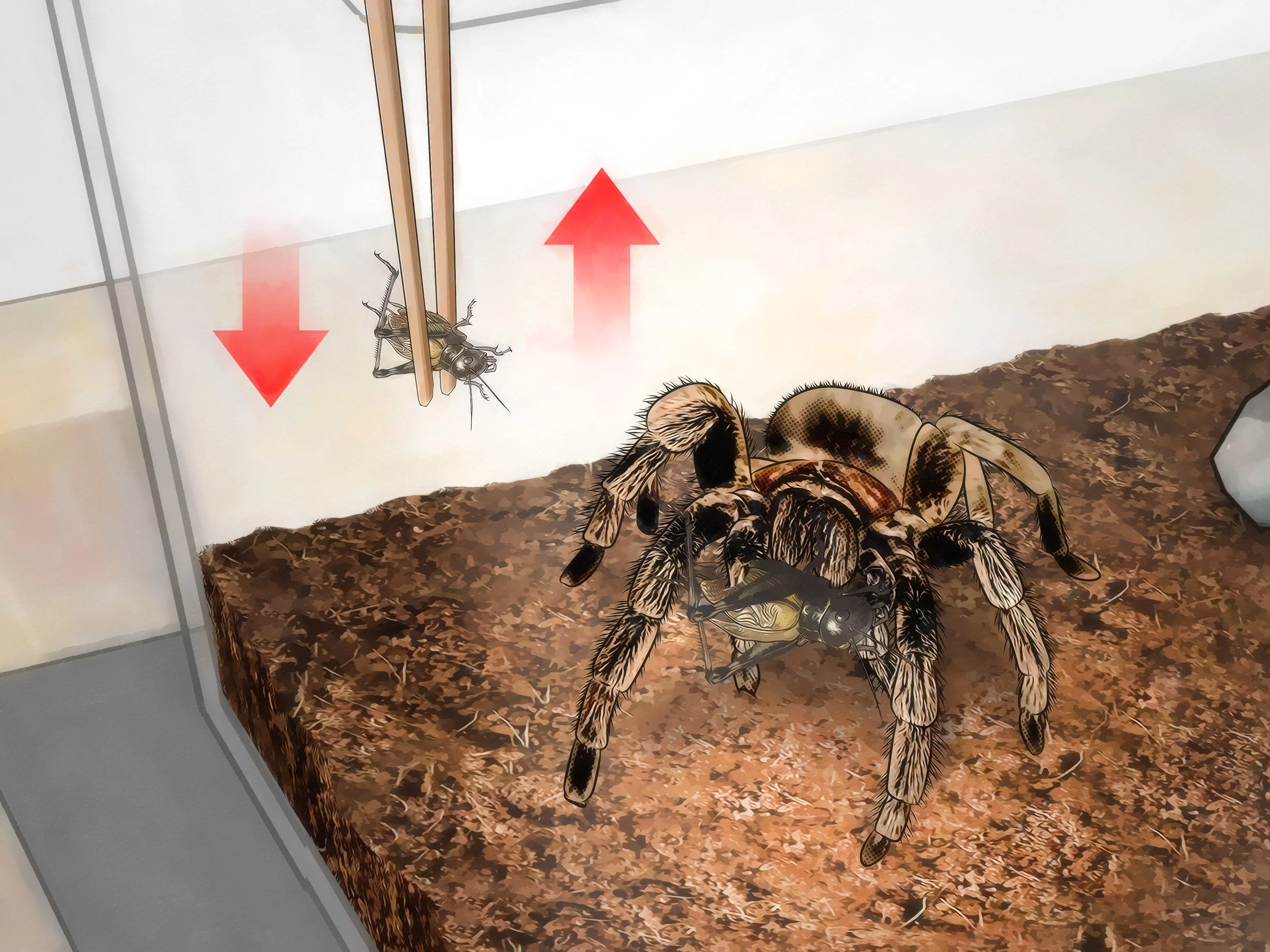
Gut-loading involves feeding the insects a nutritious diet before offering them to your tarantula. This process enhances the nutritional value of the insects, as your tarantula consumes the contents of the insect’s digestive system. Feed the insects a diet rich in vitamins, minerals, and other essential nutrients for 24 to 48 hours before feeding them to your tarantula. Good options for gut-loading include fresh vegetables like carrots and leafy greens, along with commercially available gut-loading diets. Gut-loading is especially important if you’re feeding crickets, as they often have limited nutritional value if not properly fed beforehand.
Removing Unwanted Food
Uneaten food can pose significant risks to your tarantula’s health. Leftover insects can stress your tarantula and may even attack it, particularly during a molt. Also, uneaten food items decompose over time, leading to unsanitary conditions within the enclosure and potentially introducing harmful bacteria or mold. After feeding, observe your tarantula to see if it has consumed its meal. If the food remains uneaten after 24 hours, remove it from the enclosure. Clean the enclosure regularly to maintain a healthy environment. Removing uneaten food is a critical part of responsible tarantula care, preventing potential health issues.
Handling Feeding Challenges
Even with proper care, feeding challenges may arise. These can include tarantulas refusing to eat, problems with overfeeding, and the need to address hydration. Recognizing these challenges and knowing how to handle them is crucial for tarantula care. Addressing these challenges requires a keen understanding of tarantula behavior and environmental factors. The ability to recognize the signs of an unhealthy tarantula is important for taking the right action.
Tarantula Refusal to Eat
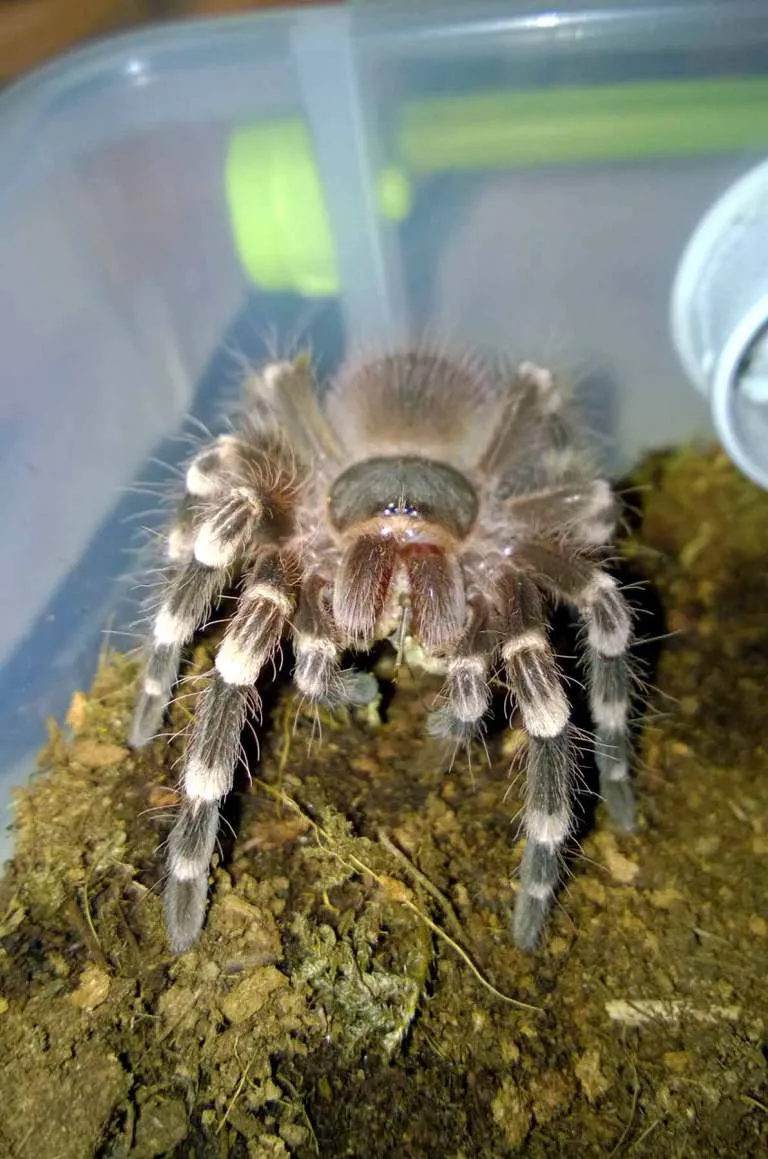
Tarantulas may refuse to eat for various reasons. These can include being in pre-molt, stress from environmental factors, or simply not being hungry. If your tarantula stops eating, first check its abdomen. If it’s plump, it likely isn’t hungry. Also, check the enclosure’s temperature and humidity to ensure they are within the correct range. If your tarantula is preparing to molt, it will often refuse food for weeks or even months. Avoid offering food during this time and refrain from disturbing it. If the refusal to eat persists, and there are no obvious reasons, consult with a veterinarian or experienced tarantula keeper.
Overfeeding and its Risks
Overfeeding a tarantula can lead to various health problems. While it may seem that providing an abundance of food is a good thing, overfeeding can cause excessive weight gain, potentially making it difficult for the tarantula to molt. Obesity may also strain the tarantula’s internal organs. Always feed your tarantula appropriately, following the recommended feeding schedules for its life stage. Observe its body condition and adjust the amount of food accordingly. Prevention is always better than cure.
Hydration and Water Access
Providing fresh water is as crucial as proper feeding. Tarantulas need access to clean water to stay hydrated and healthy. Always have a shallow water dish in the enclosure, ensuring it’s easily accessible and not too deep to prevent the tarantula from drowning. Change the water regularly, ideally every day or two, to prevent contamination. In addition to the water dish, maintain the correct humidity levels for your tarantula’s species. Misting the enclosure occasionally may be necessary, but do not over-saturate the substrate, which could lead to mold growth.
